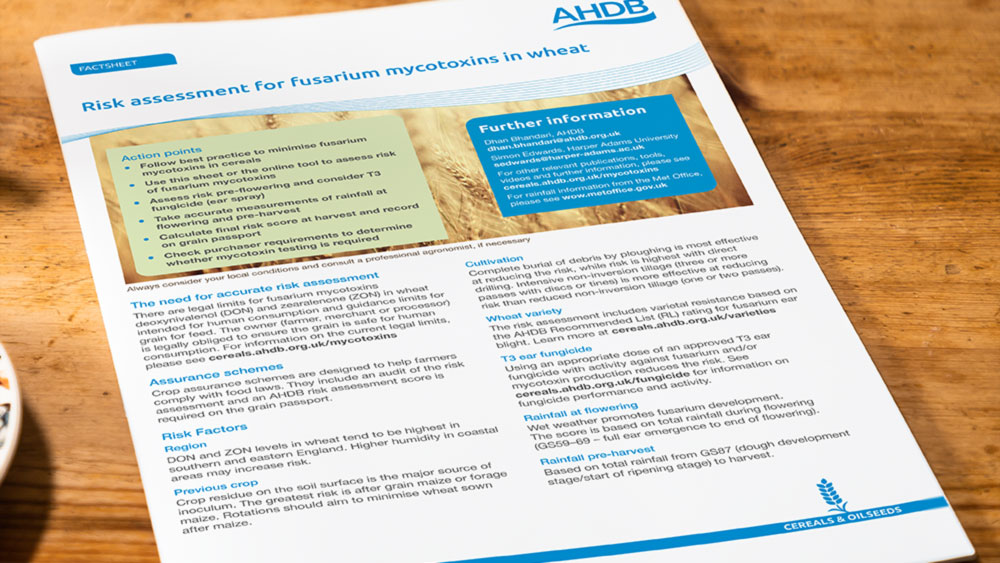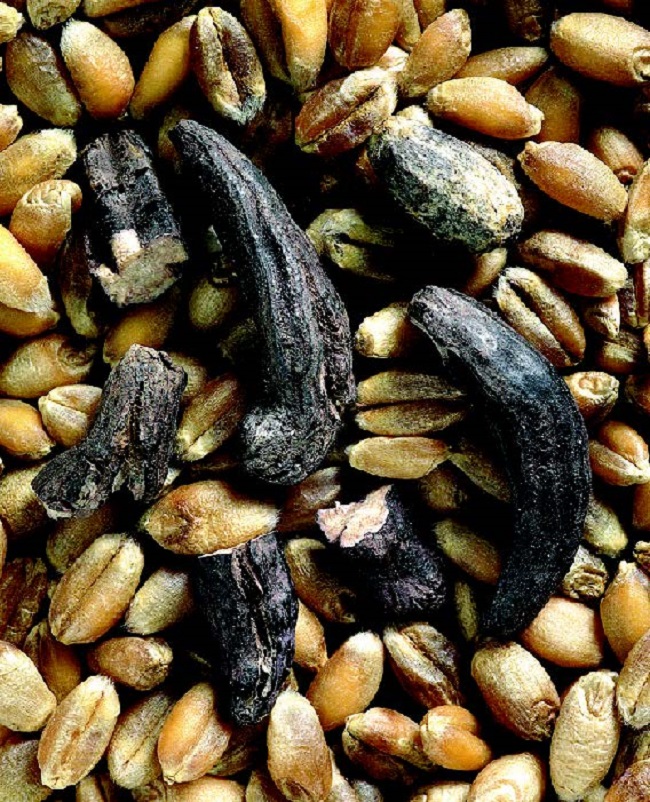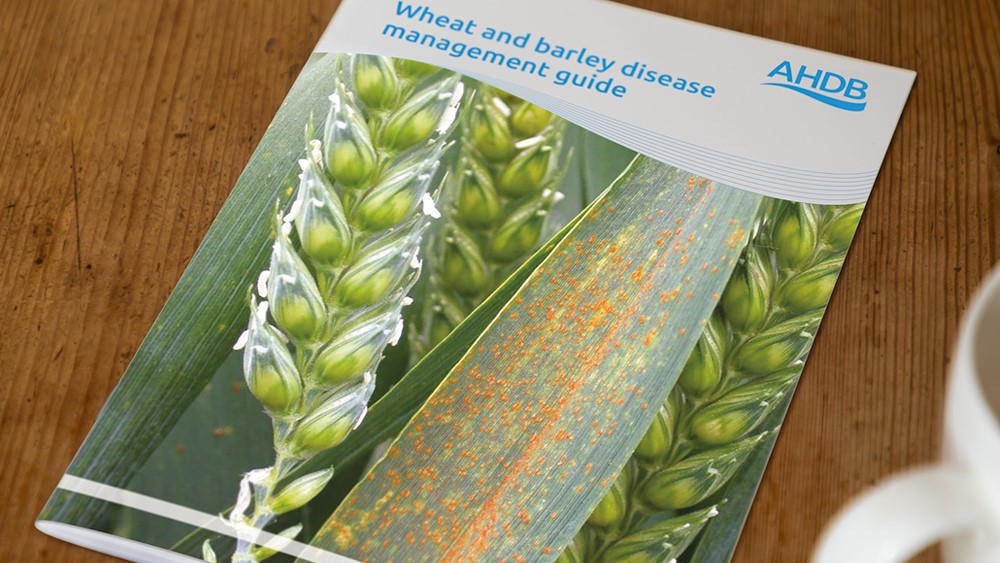- Home
- Knowledge library
- Monitoring of contaminants in UK cereals used for processing food and animal feed (2016–24)
Monitoring of contaminants in UK cereals used for processing food and animal feed (2016–24)
Summary
Downloads
21130040 – mycotoxin results for harvest 2023 21130040 – annual project report 2023 21130040 – mycotoxin results for harvest 2022 21130040 – annual project report 2022 21130040 – annual project report 2021 21130040 – mycotoxin results for harvest 2021 21130040 – results for harvest 2020 21130040 – annual project report 2020 21130040 – results for harvest 2019 21130040 – annual project report 2019 21130040 – results for harvest 2018 21130040 – annual project report 2018 21130040 – annual project report 2017About this project
The challenge
Food and feed industries rely on consumer confidence. For the UK grain supply chain to remain competitive, it needs to maintain its reputation for compliance and quality. AHDB is highly valued for its independent work on monitoring agro-chemical residues and contaminants since the mid-1980s. Industry consultations have highlighted:
- The importance of monitoring contaminants in cereals to provide customer confidence.
- The need to help the UK grain supply chain prepare for new legislation and growing demands on supply.
The project
This project will conduct an annual survey of the incidence and levels of key mycotoxins (e.g. DON, ZON, T2/HT2, OTA and ergot alkaloids) and other contaminants (e.g. pesticides, heavy metals, CIPC and PAHs) in representative commercial samples of UK-grown wheat, barley and oats and co-products (wheatfeed and oatfeed) and store samples as archive material. The data on the incidence and levels of key contaminants will be used to inform and alert the cereal industry on the safety of their products and inform discussions on impending revision of legislation. Current and emerging legislation and contaminant issues, which could impact on the safety of cereal-based foods and their acceptability in key home and overseas markets, will also be monitored as part of the project.
The benefits
This project is an important part of providing effective quality assurance for the main UK cereals and their co-products. It provides an independent monitoring scheme for agrochemical residues and other contaminants. Sitting alongside industry-led assurance schemes, this work demonstrates that UK cereals for human consumption and animal feed are independently monitored and found to comply with EU and UK legislation.
Mycotoxin results for harvest 2023
The following conclusions are from the mycotoxin results report for harvest 2023.
Deoxynivalenol (DON)
Very low across the board. 2022 saw some of the lowest DON results on record for this project and for some products (wheatfeed and feed oats) 2023 results were even lower still.
Only food oats returned a ‘high’ mean value for DON. This mean was skewed by two unusually high values. Once removed, the mean was in line with values from previous years (32.9µg/kg).
DON-3 Glucoside
Very low (as expected). As above, two unusually high values in the food oat samples have skewed the data, producing a high mean value for that product (125µg/kg). Once removed, the value drops to 6.3µg/kg, which is one of the lowest mean values observed throughout this project.
Zearalenone (ZEN)
Generally low across all product types, with incidence and maximum levels higher than 2022 but broadly in line with previous years. Only one product had an incidence level greater than 50%. Once again, food oats had a skewed mean value, the result of one very high ZEN result of 840µg/kg. Once removed, the mean value is 4.2µg/kg, which is in line with mean values observed in previous years.
SUM T2 and HT-2
Incidence levels are similar to those observed in 2022 with mean and max values also broadly similar to those seen in previous years. All products had mean values lower than the seven-year average, except oatfeed, which was marginally higher.
Ergot alkaloids
Mean levels observed in 2023 were higher for all products, except malting barley, when compared to 2022. For most products, the increase was only small. However, for oatfeed (13.2µg/kg in 2022 to 101.7µg/kg in 2023) and milling wheat (31.1 µg/kg in 2022 and 257.3 µg/kg In 2023) the increase was significant. Maximum values observed were broadly similar to those seen in previous years.
Exceedances
- 3 food oats returned values that would be ML exceedances for T2 and HT2, if the proposed limits, as detailed in the Annex of Commission Regulation (EU) 2023/915, were applied within GB. Those values were 1,407 µg/kg, 1,930 µg/kg and 1,563 µg/kg
- 2 food oats returned DON values of 6,387 µg/kg and 6,053 µg/kg and 1 food oat returned a ZEN value of 840 µg/kg, all of which are ML exceedances under GB assimilated regulation 1881/2006.
Note: Project extended to 2024.
Also...
Watch a presentation on this work from the 2023 Agronomy Conference
Read about this project in Crop Production Magazine.
An eye on visible and subtle threats (2023)
Monitoring of contaminants in UK cereals used for processing food and animal feed (2016)




